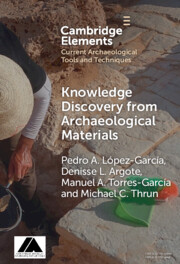Element contents
Knowledge Discovery from Archaeological Materials
Published online by Cambridge University Press: 20 September 2024
Summary
- Type
- Element
- Information
- Online ISBN: 9781009181884Publisher: Cambridge University PressPrint publication: 17 October 2024

